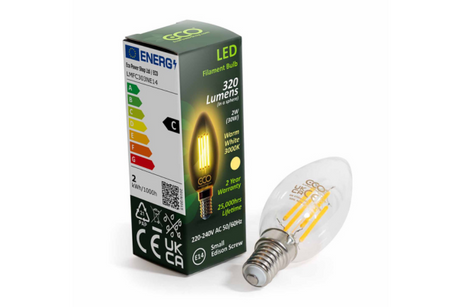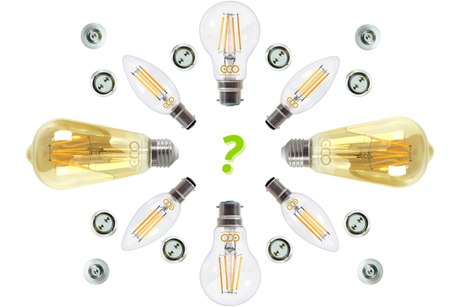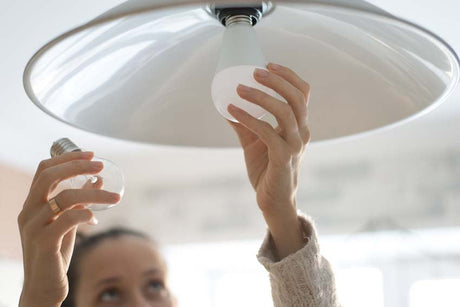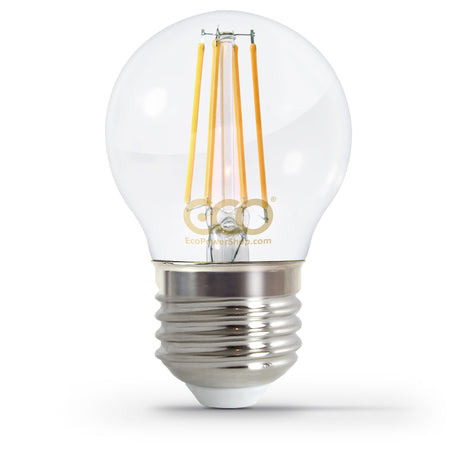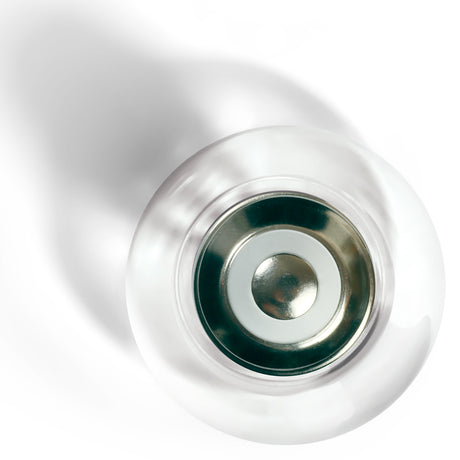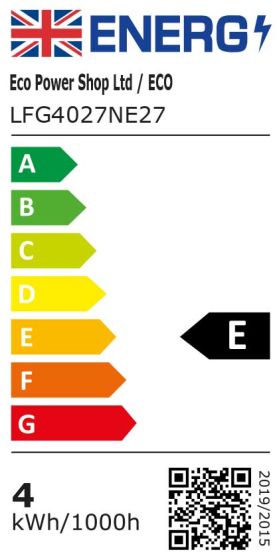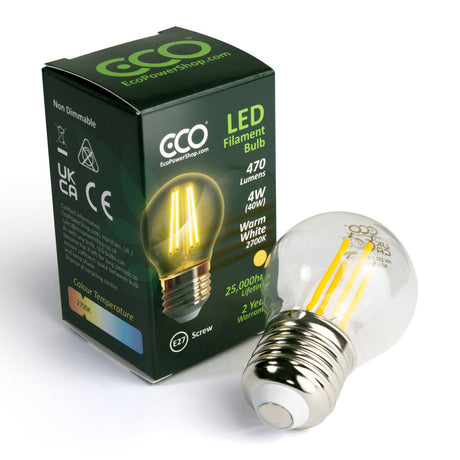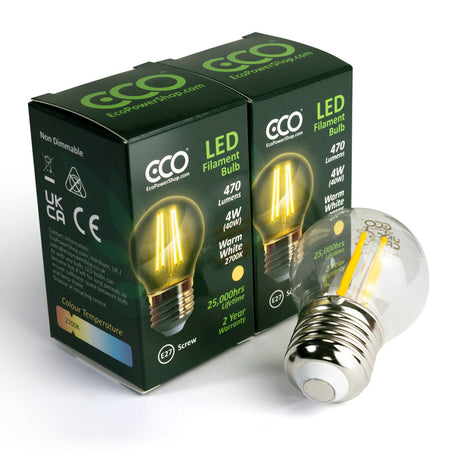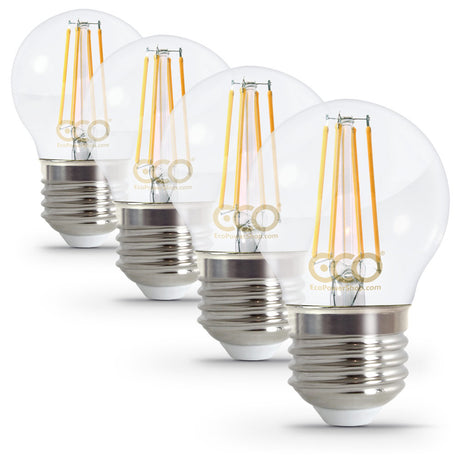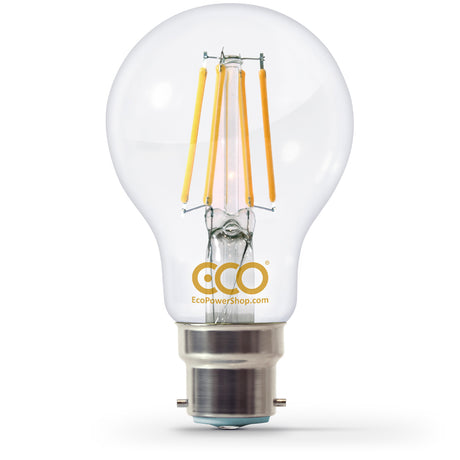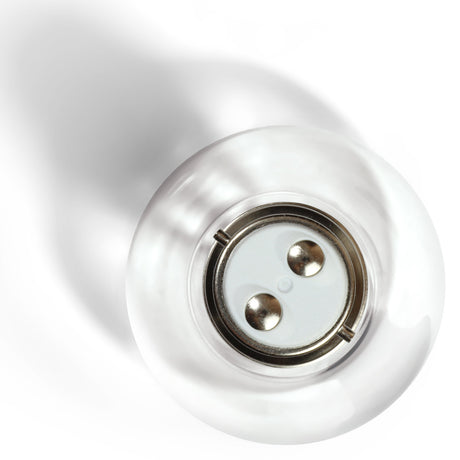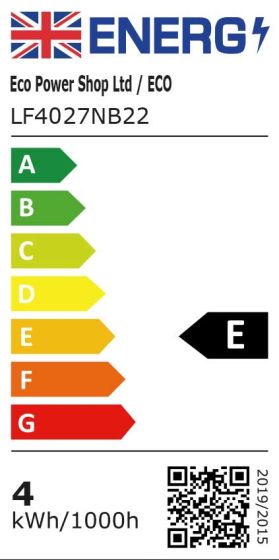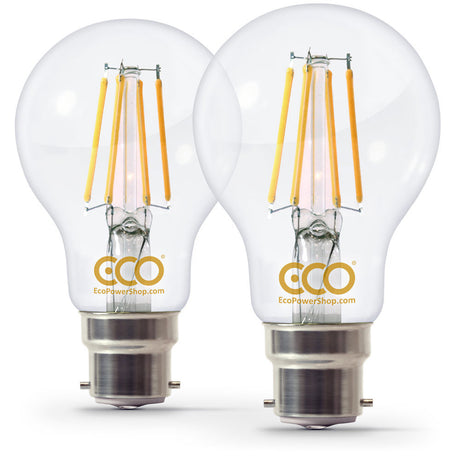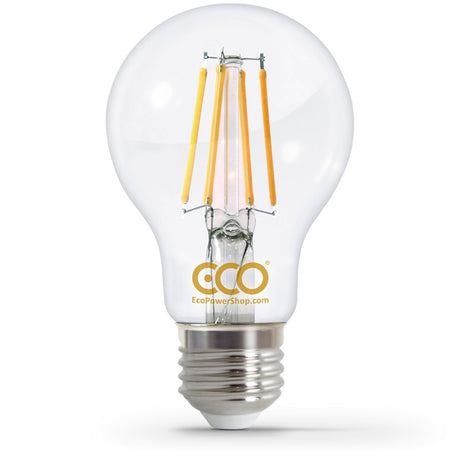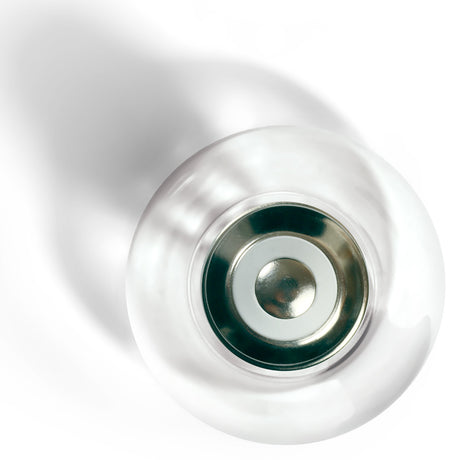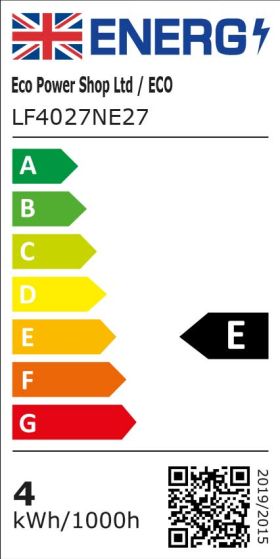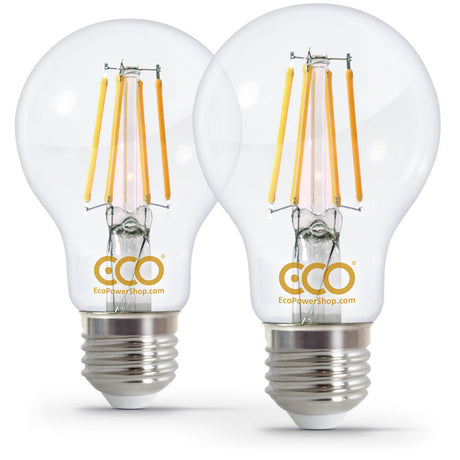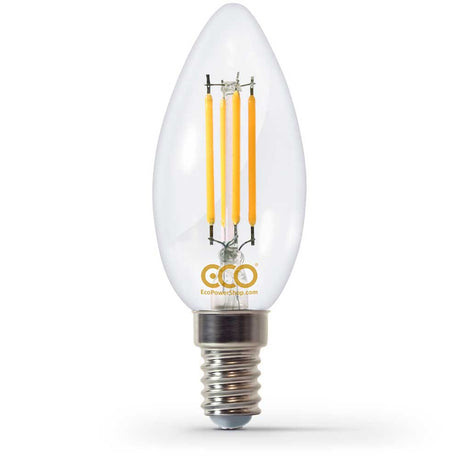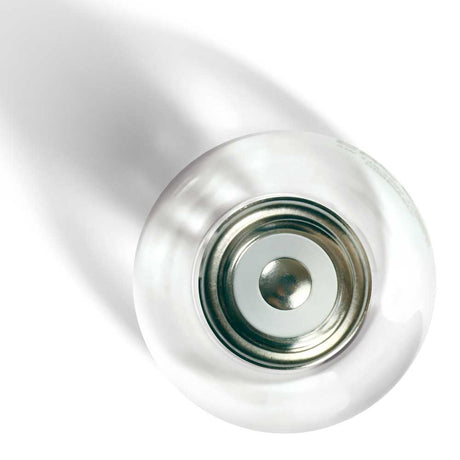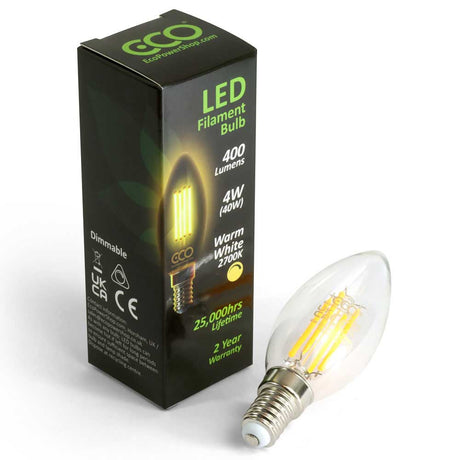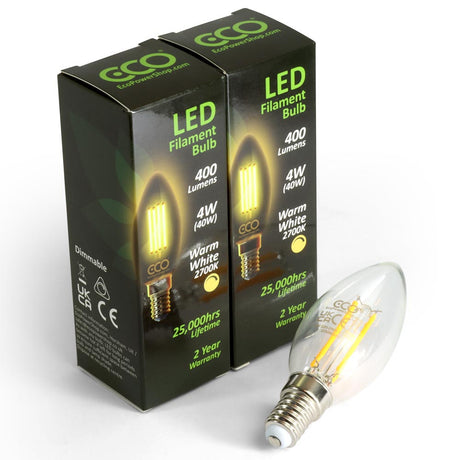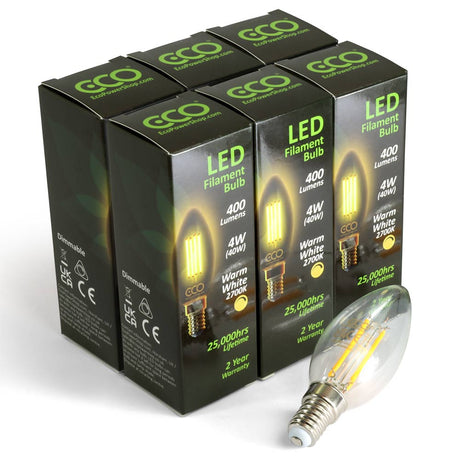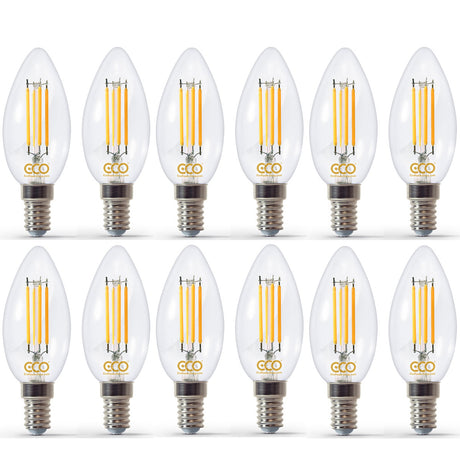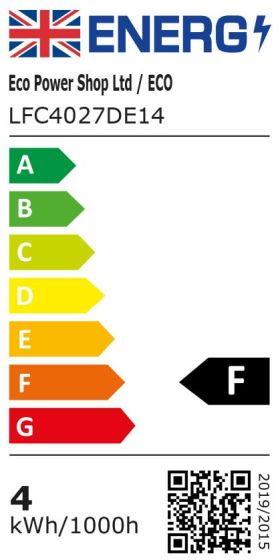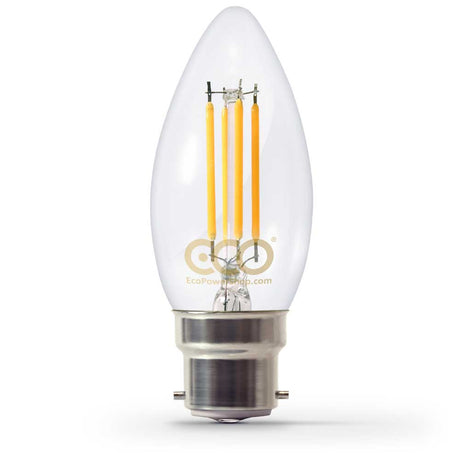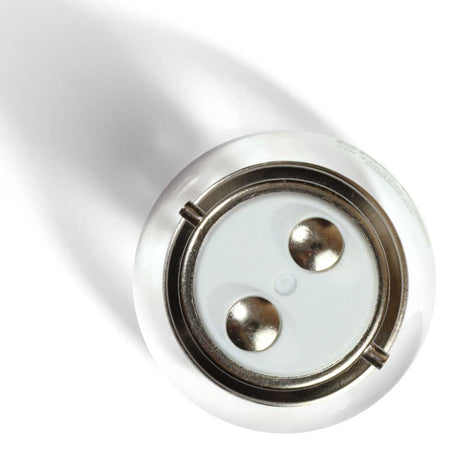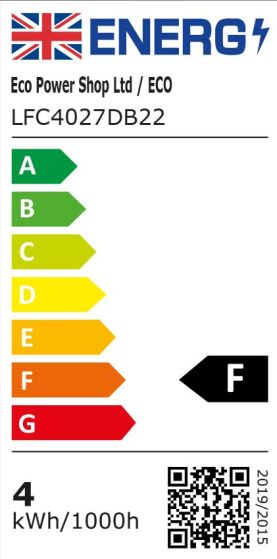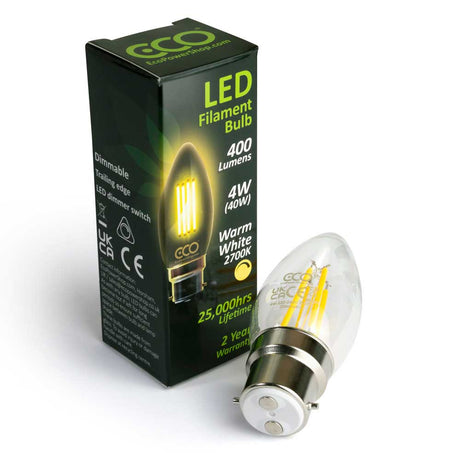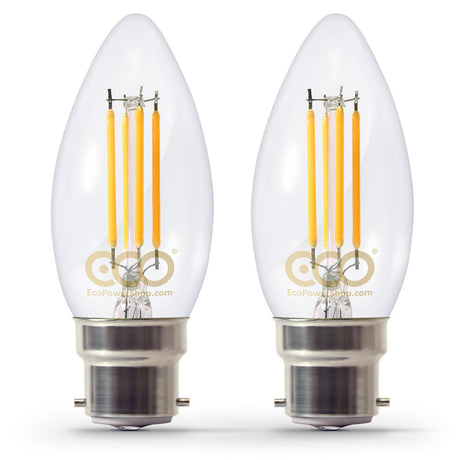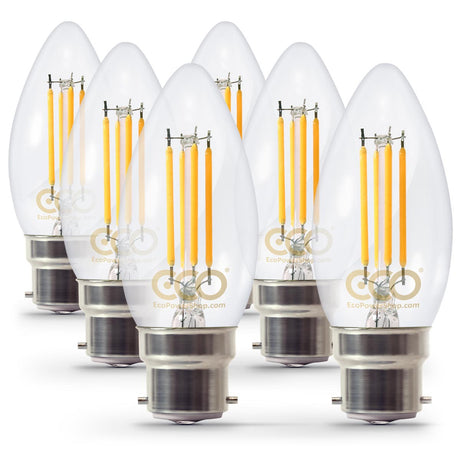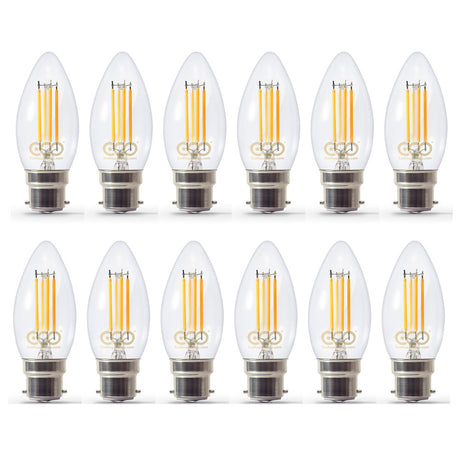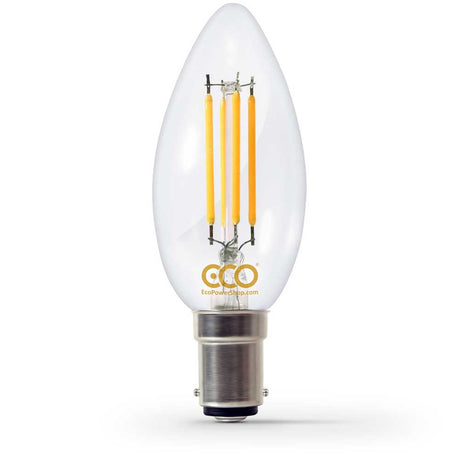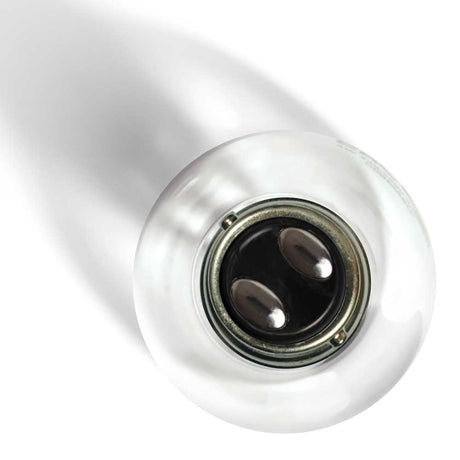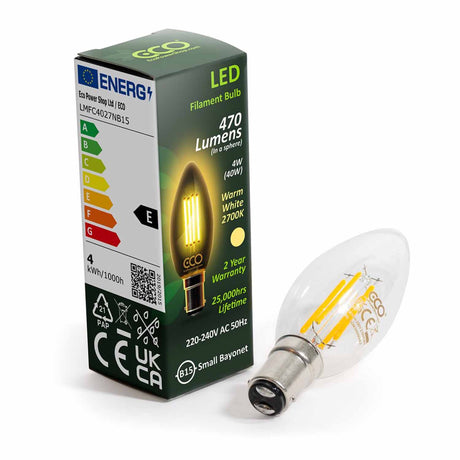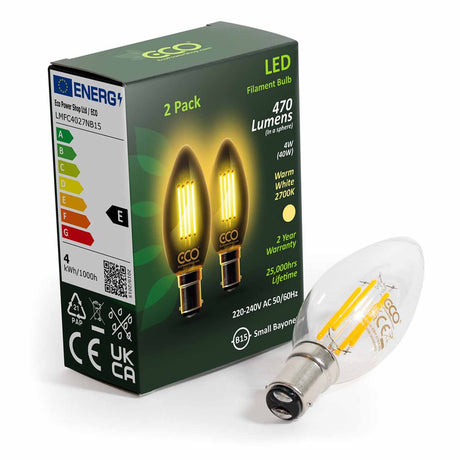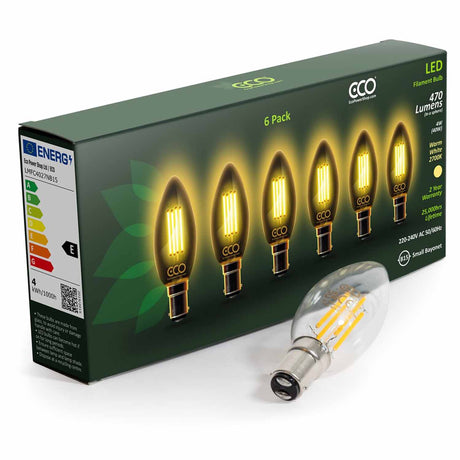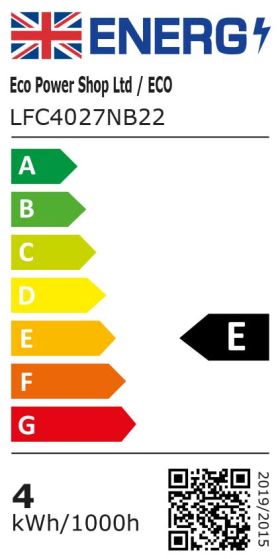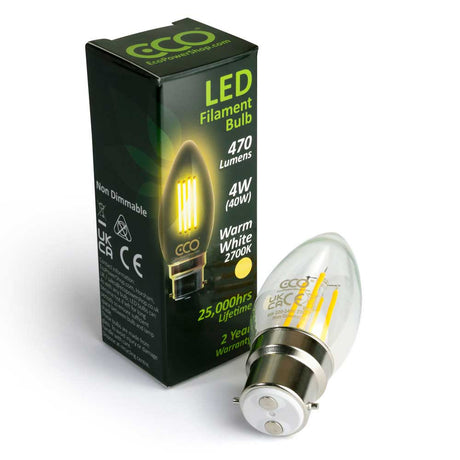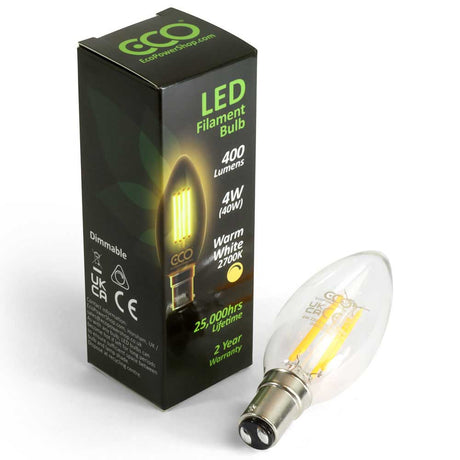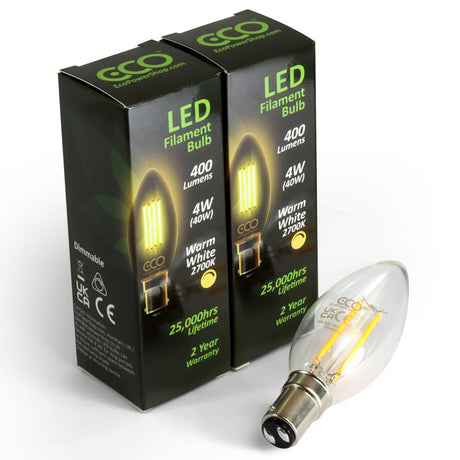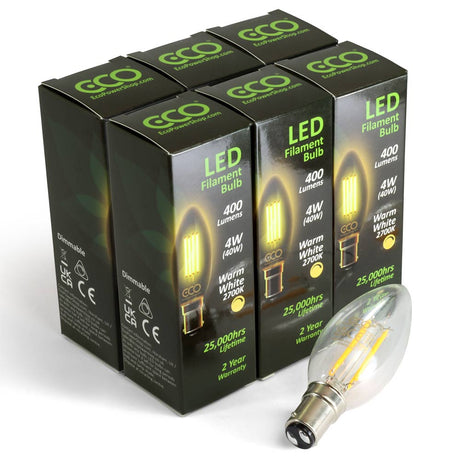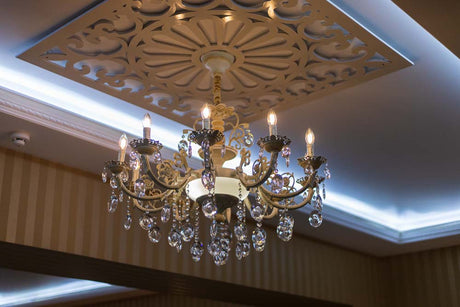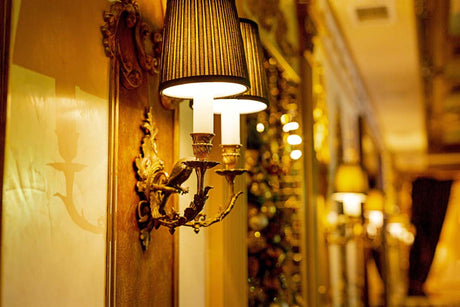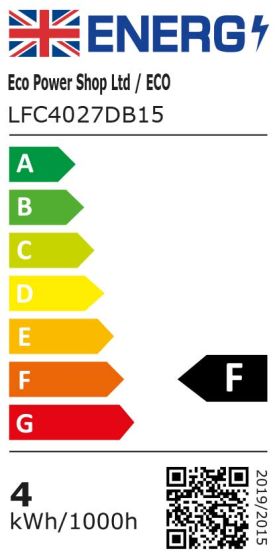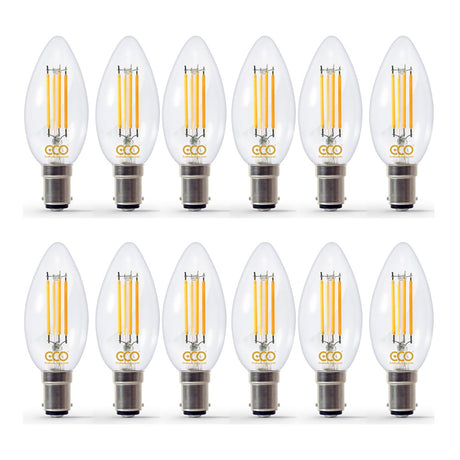When it comes to buying LED light bulbs, there is a confusing amount of choice and information available. In this useful guide we’ll answer some common questions about light bulbs, while setting out the following simple steps to help you find your perfect bulb:
Step 1 - Find the Correct Light Bulb Shape and Base
Step 2 - Select Your Preferred Brightness
Step 3 - Consider the Colour Temperature
Step 4 - Decide If You Need A Dimmable Bulb
Step 1 - Find the Correct Light Bulb Shape and Base
The very first step is finding out what fitting you need as light bulbs are available in a variety of different fitting types (also called bases or caps), with the most common being screw and bayonet caps.
The shape of the bulb is also important to consider, as some shapes are better suited to different fittings. For example, candle-shaped bulbs can look great in chandeliers and other decorative light fittings. Desk or table lamps often need golf-ball bulbs.
How to find which light bulb you need?
The best way to find which bulb type you need is to look at the packaging of the old bulb you’re replacing (if you’ve kept this, of course) or to look for information on the old bulb or the light fitting.
Alternatively, use our helpful guide on bulb bases and shapes to find out what your existing bulb is.
If you need to check the bulb size, the datasheets on our websites include the bulb’s dimensions.
Step 2 – Select Your Preferred Brightness
The brightness you pick will depend on the room you want to light and also your personal preference.
However, it is important to understand the difference between wattage and lumens when you’re considering brightness.
What does the wattage of a light bulb mean?
The actual wattage of modern LED bulbs relates to the energy consumption of the bulb, which in turn determines the electricity required (and cost) to run the light bulb. It is no longer directly correlated with brightness for LED bulbs, but some people still refer to the equivalent wattage of bulbs to help them select the brightness they want.
The equivalent wattage refers to the equivalent wattage of old incandescent bulbs, which used to dominate the light bulb market but have been phased out in the UK and Europe due to being very energy inefficient. For incandescent bulbs, the brightness of the bulb directly correlated with the wattage. For example, a 100W incandescent bulb would be very bright, whilst a 40W bulb would be less bright.
While the actual wattage of energy-efficient LED bulbs is no longer directly related to brightness, many individuals still refer to the equivalent wattage of bulbs to help select the desired brightness level (e.g. 40W, 60W, 75W or 100W equivalent).
What are lumens?
Lumens are a measure of the total amount of visible light (to the human eye) from a lamp or light source. Therefore, lumens are effectively a measure of the brightness of a light bulb.
However, not everyone is aware of this, so to make things easier we provide information on both lumens and equivalent wattage for all our LED bulbs.
Lumens per Watt is a completely different measurement that equates to the amount of light a bulb produces for every watt of power. Therefore, lumens per watt indicates the energy efficiency of the bulb (with more energy efficient bulbs having a higher value and a better energy rating).
If you want to know more about the energy efficiency of bulbs, check out our useful guide on bulb energy ratings.
What LED bulb is equivalent to 100 Watt?
Now we’ve covered the difference between lumens and wattage, here is a useful table to give some examples of how lumens and equivalent wattage relate to each other for LED bulbs:
|
Bulb Brightness (lumens) |
Equivalent Wattage* |
Approx. Actual Wattage for an E-rated LED bulb |
|
249 |
25W |
2W |
|
470 |
40W |
4W |
|
806 |
60W |
6-7W |
|
1055 |
75W |
8-10W |
|
1521 |
100W |
11-14W |
Step 3 - Consider the Colour Temperature
The colour temperature of LED bulbs (sometimes also called the correlated colour temperature, CCT) means the hue of the light emitted by the bulb and is measured in degrees on the Kelvin (K) scale.
 LED bulbs come in many colour temperatures but here are the common ones:
LED bulbs come in many colour temperatures but here are the common ones:
| Colour Temperature | Description |
| 2700K | Very Warm White |
| 3000K | Warm White |
| 4000K | Neutral White |
| 6500K | Cool White/ Daylight |
The warmer colour temperatures provide a cosier lighting effect, which can work well in living rooms and bedrooms.
A cooler white, like cool white or daylight, feels less cosy and is better suited for spaces where you need bright, clear illumination to enhance focus. For example, in kitchens, offices, workshops and studios.
Ultimately, the colour temperature you select for a room will reflect your personal preference. The only recommendation we’d make is to avoid mixing different colour temperatures within the same space.
What is the CRI of a light bulb?
Another specification often mentioned in relation to bulbs is CRI, Colour-Rendering Index, which is a measure of the ability of the bulb to reveal the true colours of the objects it lights up.
CRI is measured on a scale of 0 to 100 Ra, with natural daylight having a CRI of 100 Ra.
All of our ECO bulbs have a high CRI value of 80 Ra or above.
Step 4 - Decide If You Need A Dimmable Bulb
If you want to vary the brightness of the lighting in your room, you can purchase a dimmable bulb but you will also need a compatible LED dimmer switch.
Are all LED light bulbs dimmable?
No, LED bulbs are either dimmable or non-dimmable. We supply a range of ECO dimmable bulbs that are compatible with most Trailing Edge LED dimmer switches.
Never use a non-dimmable bulb in a dimmable light fitting.
Step 5 – Think About Style
Finally, think about the overall look you want. The majority of LED bulbs are available in the following styles:
|
Standard style with a white finish These bulbs are fantastic in general light fittings and are available in many different brightness and colour temperature options. These bulbs usually offer better value for money. |
 |
 |
Filament-style Also called vintage or retro-style, these light bulbs look similar to traditional incandescent bulbs but have the great energy efficiency of LED bulbs. These look fantastic in decorative, feature light fittings, including chandeliers and modern ceiling lights, with the LED filaments on display. This style of bulb often has a warm white colour temperature and lower brightness, although very bright versions such as our 70W-equivalent (960 lumens) version are available. |
In conclusion, there is a lot of choice out there for LED bulbs and we hope this guide helps you find the perfect bulb. If you still have questions, take a look at:
Or please just get in touch.
* Source: https://eur-lex.europa.eu/eli/reg_del/2019/2015/2023-09-30


